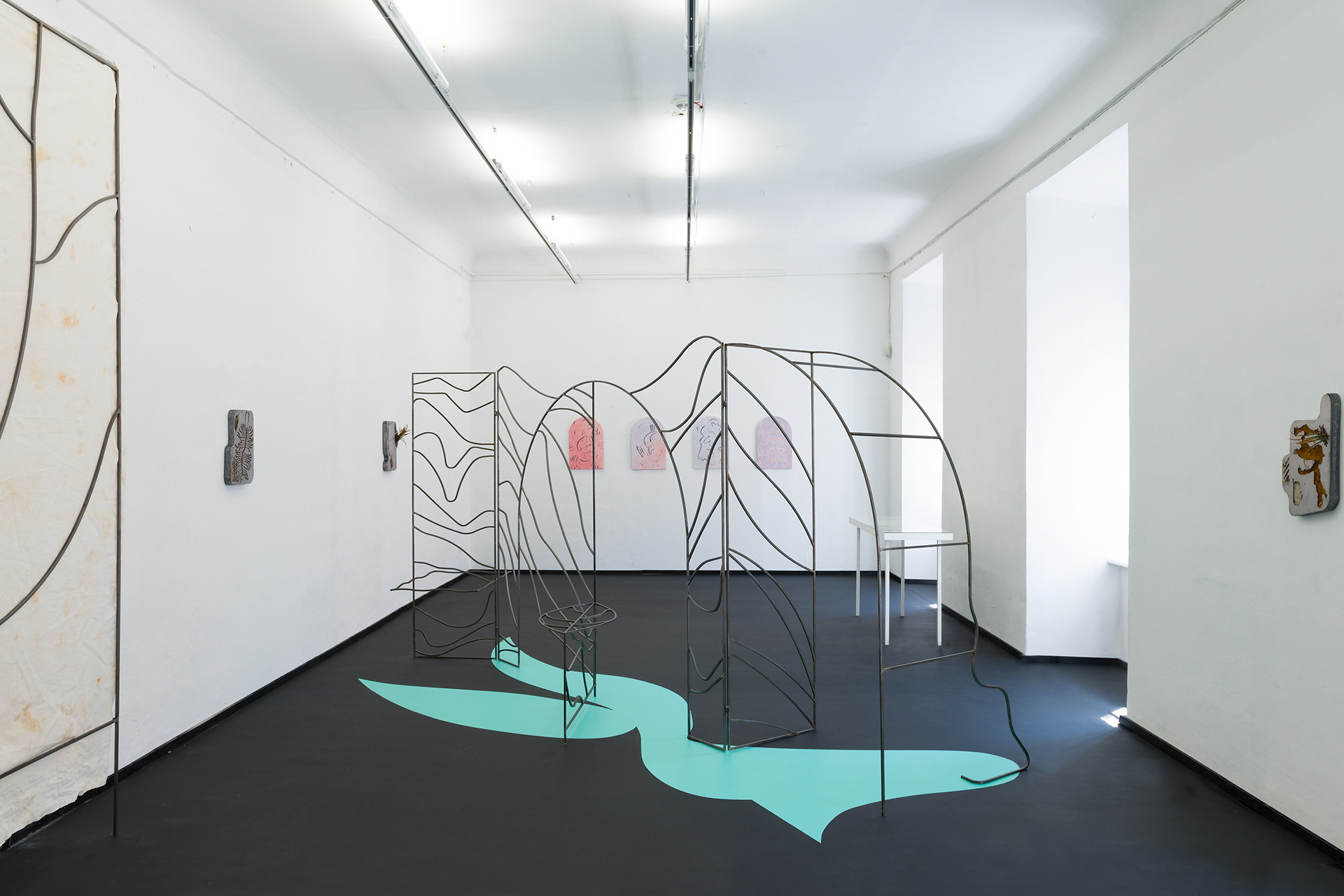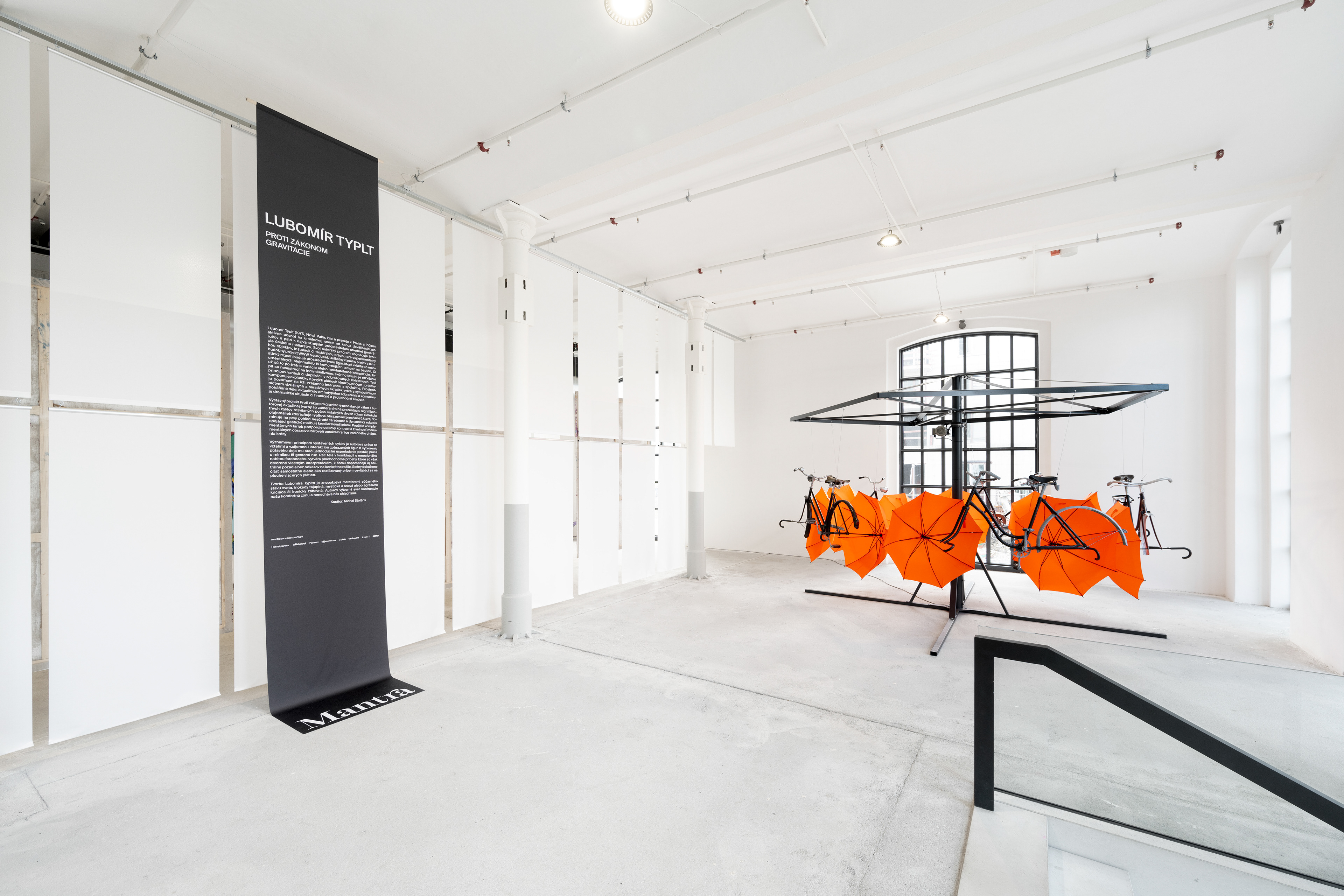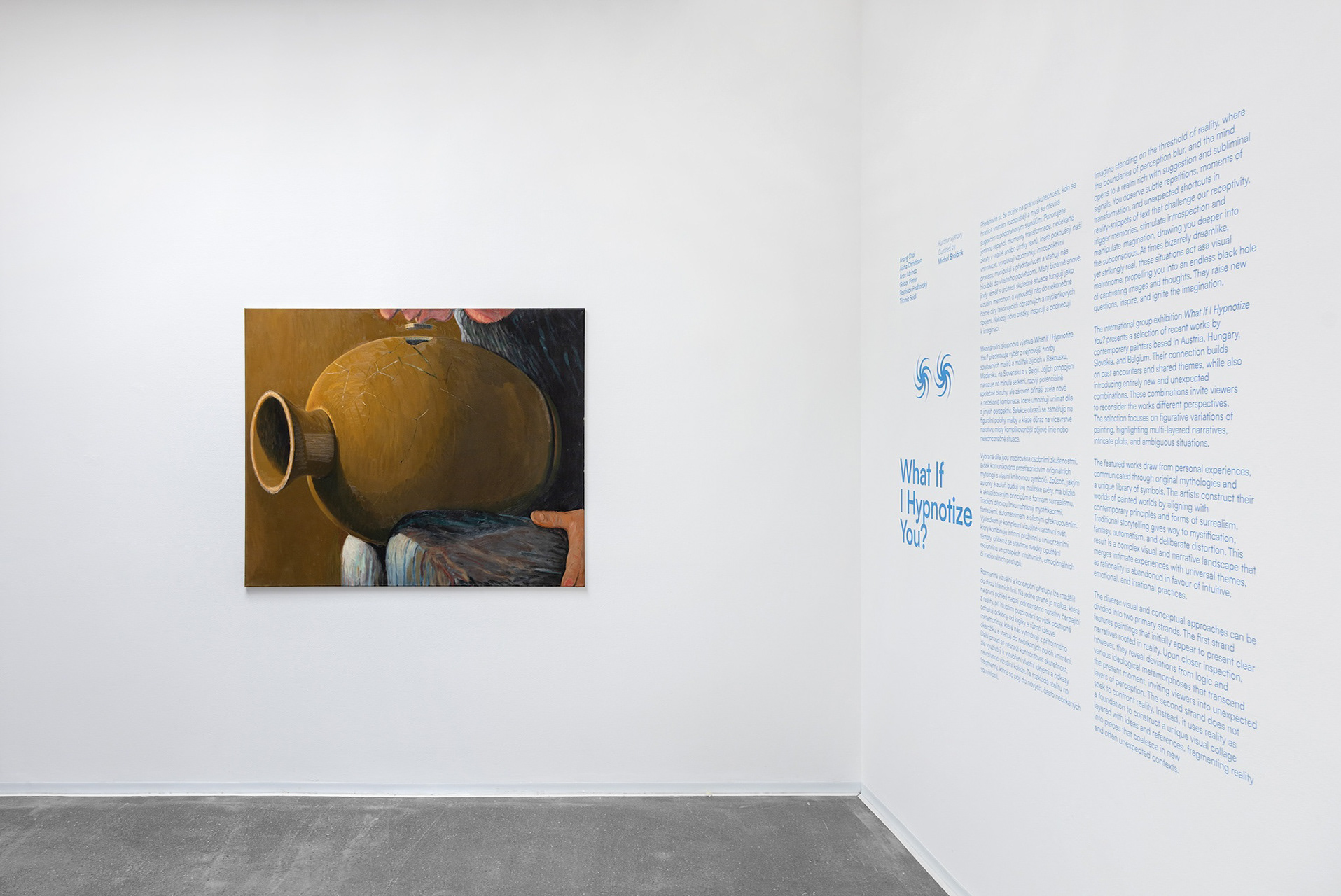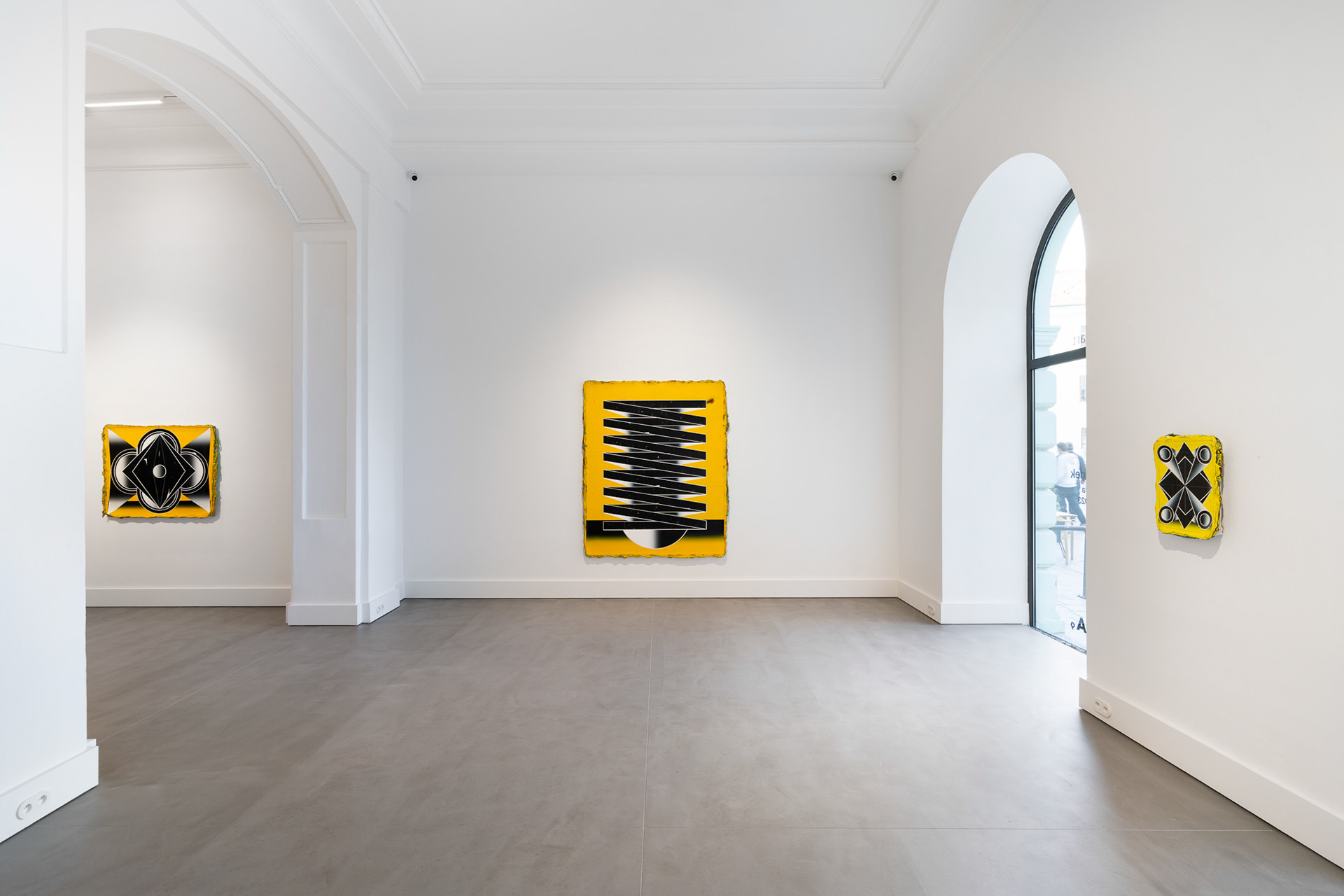
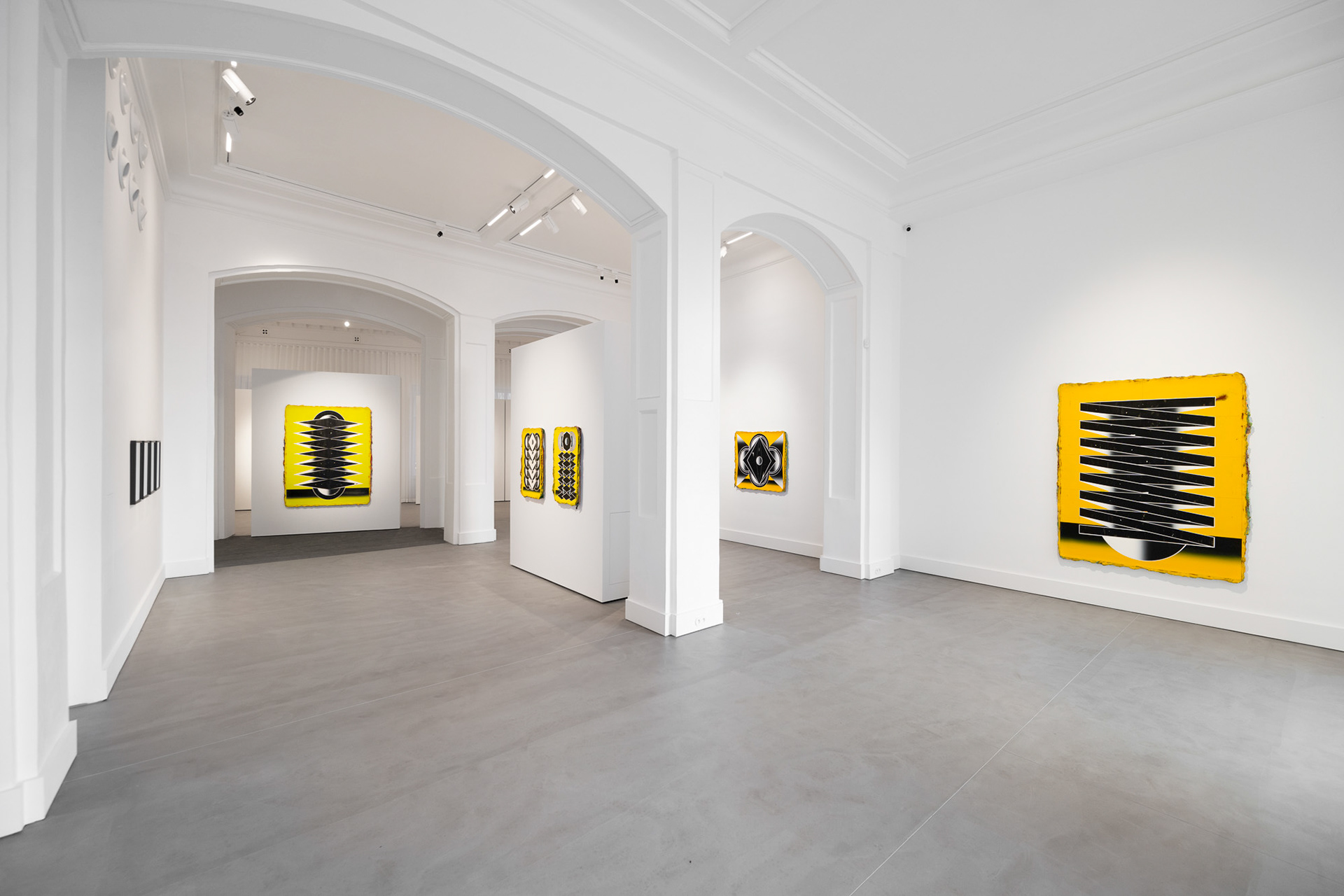
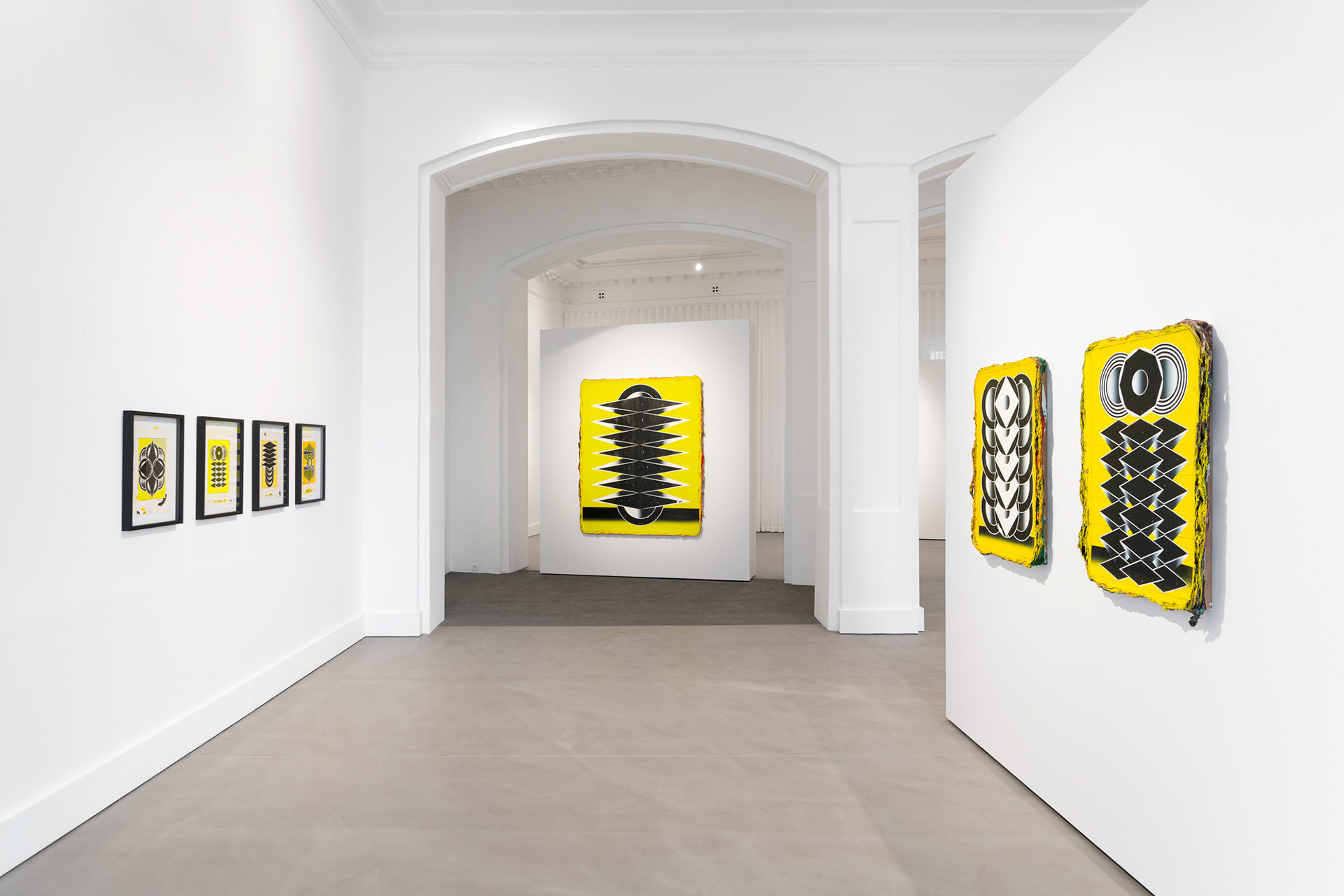
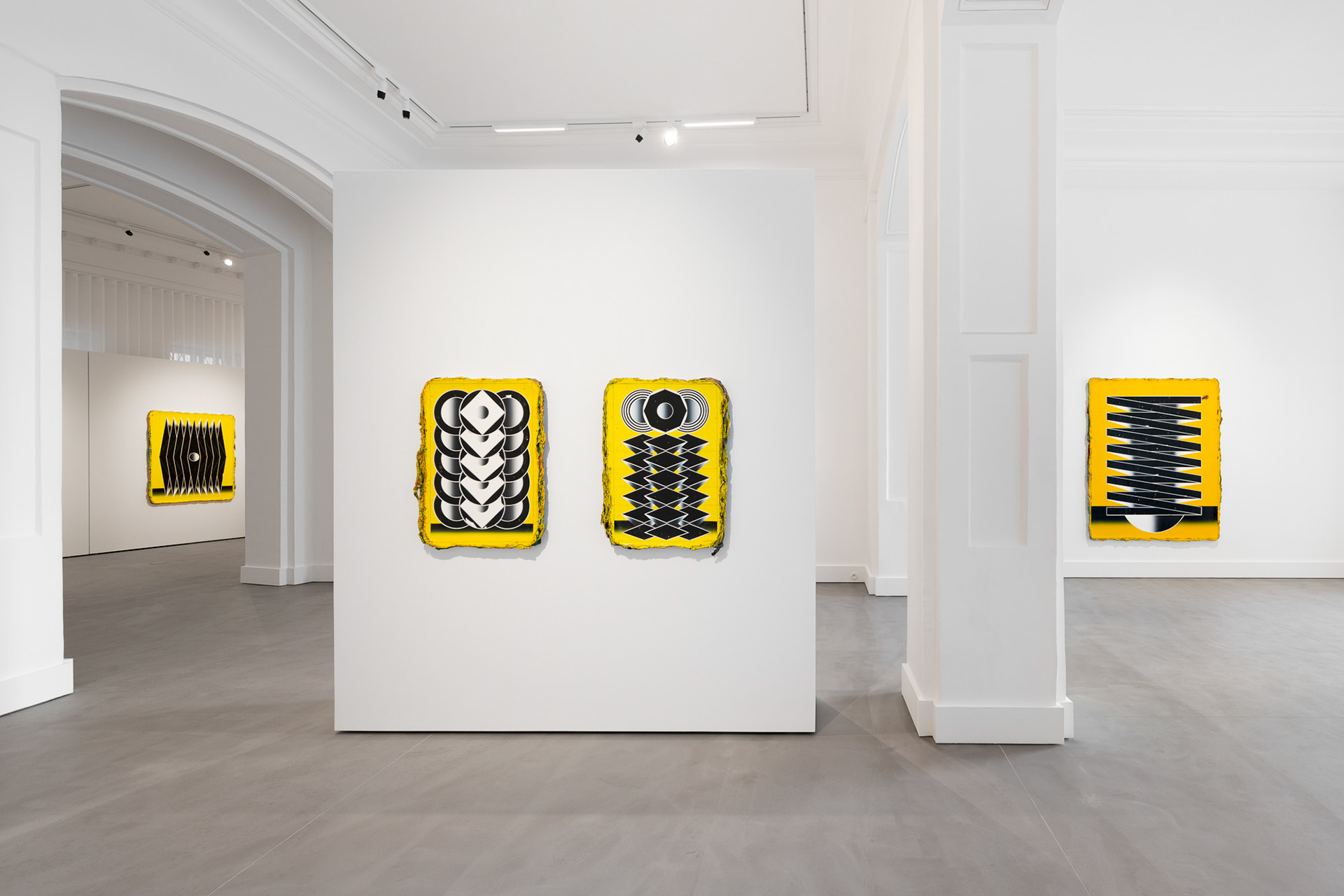
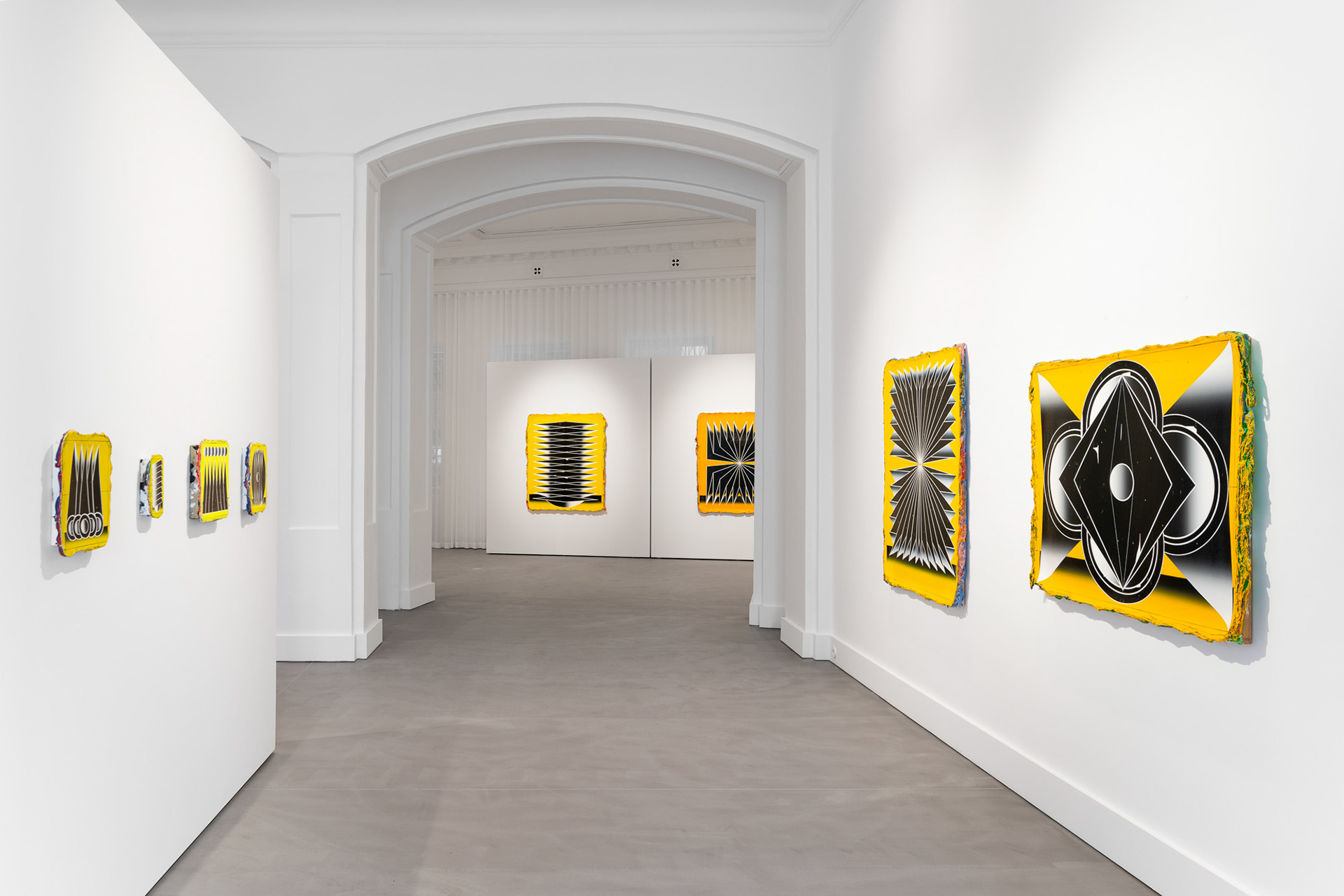
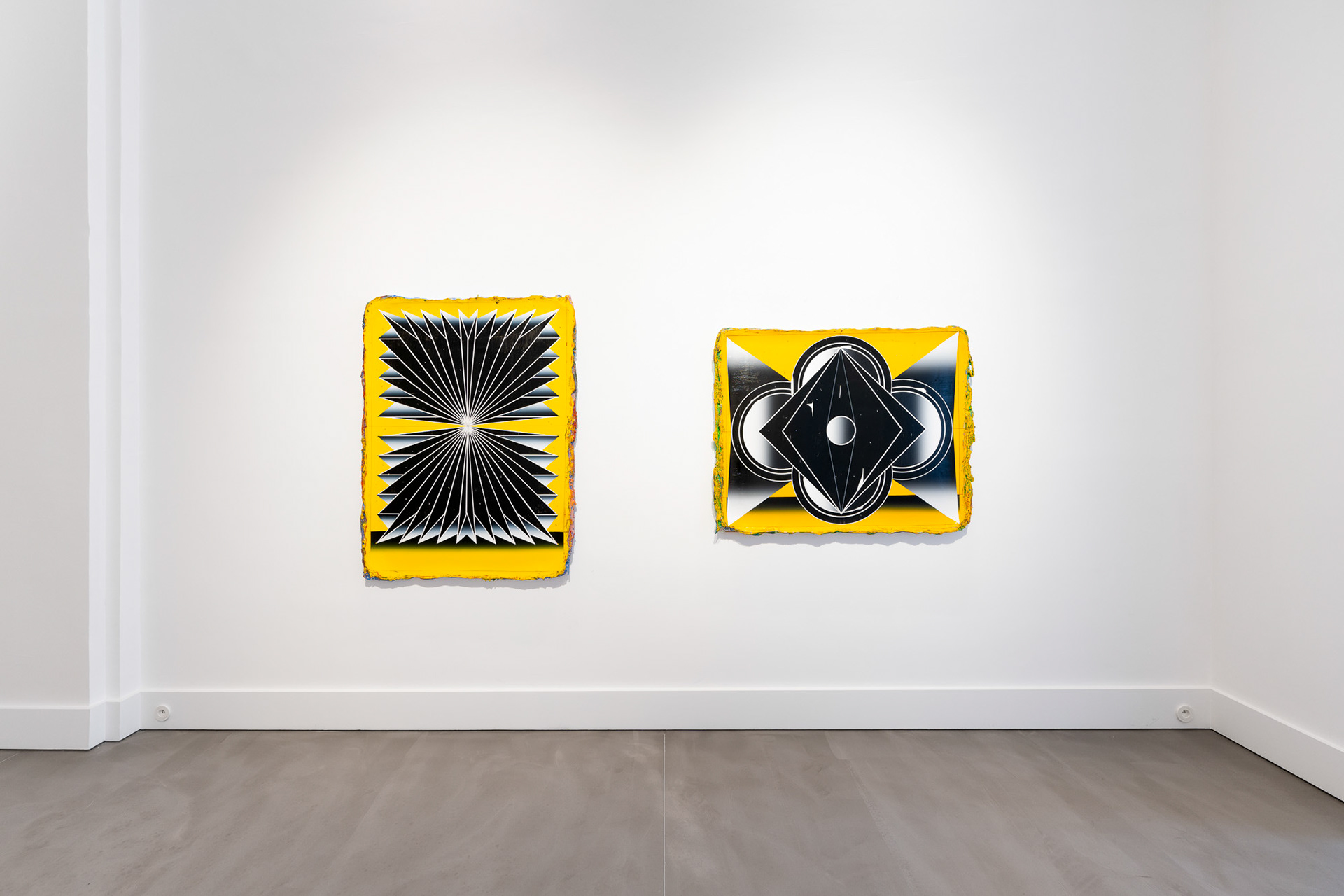
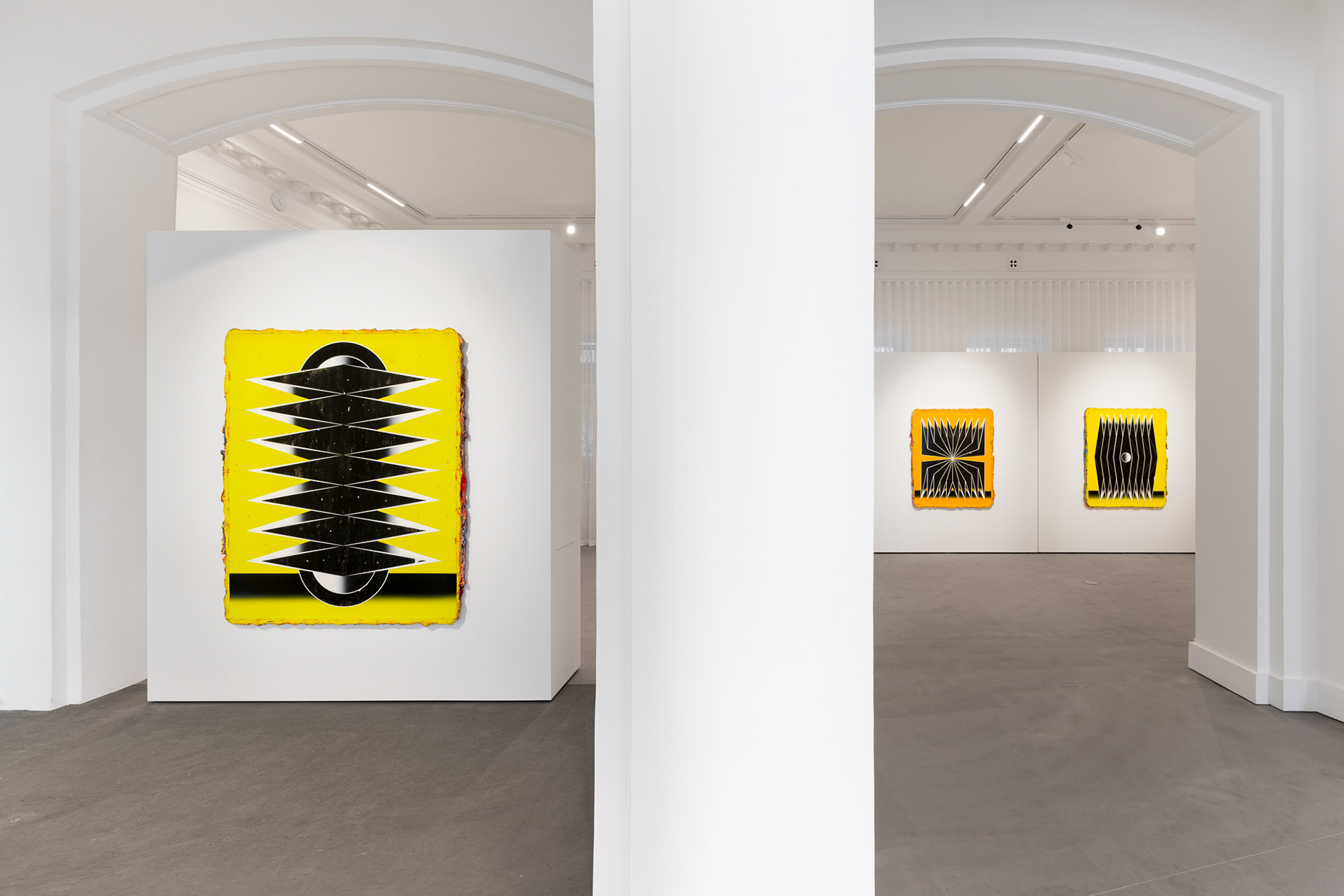

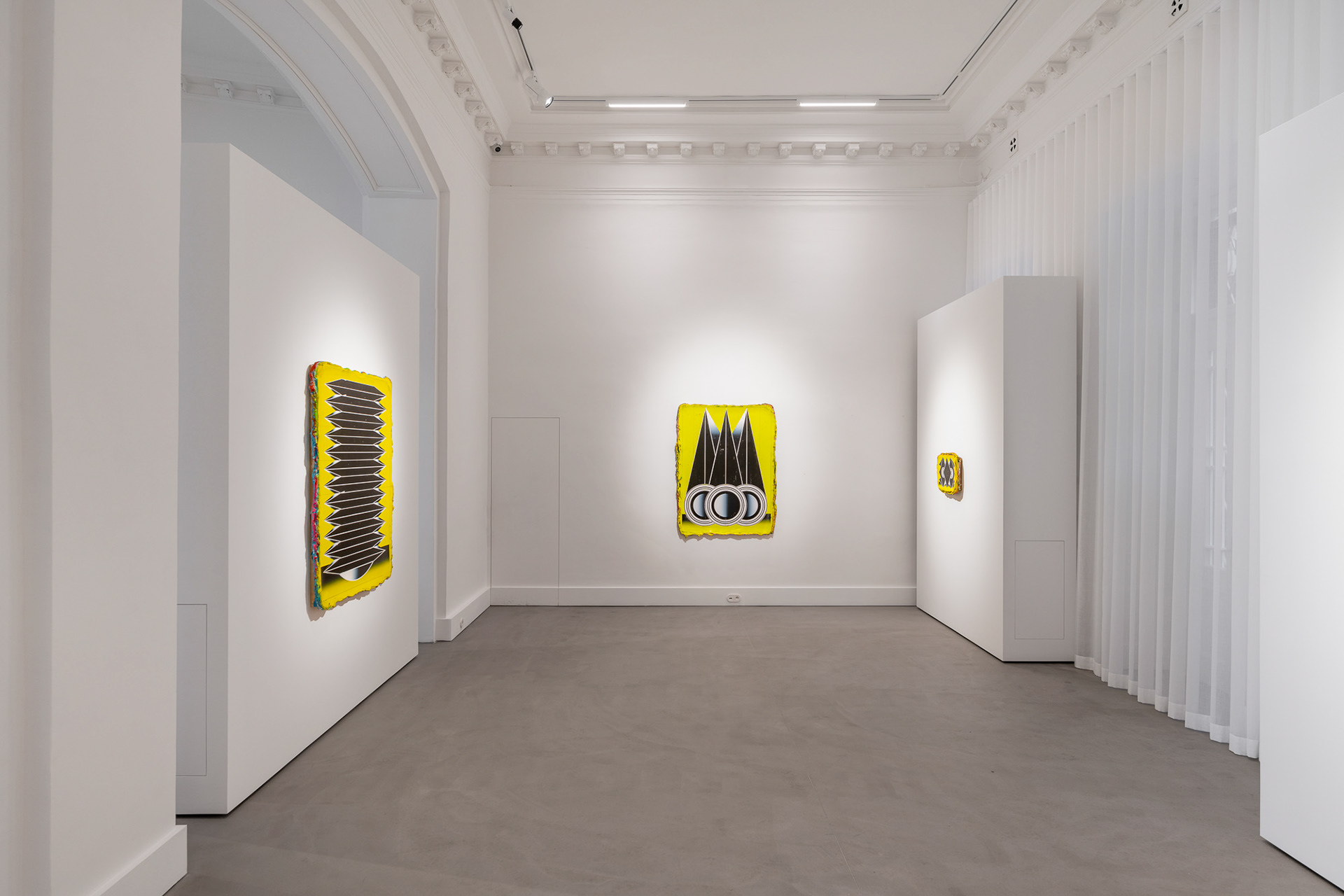



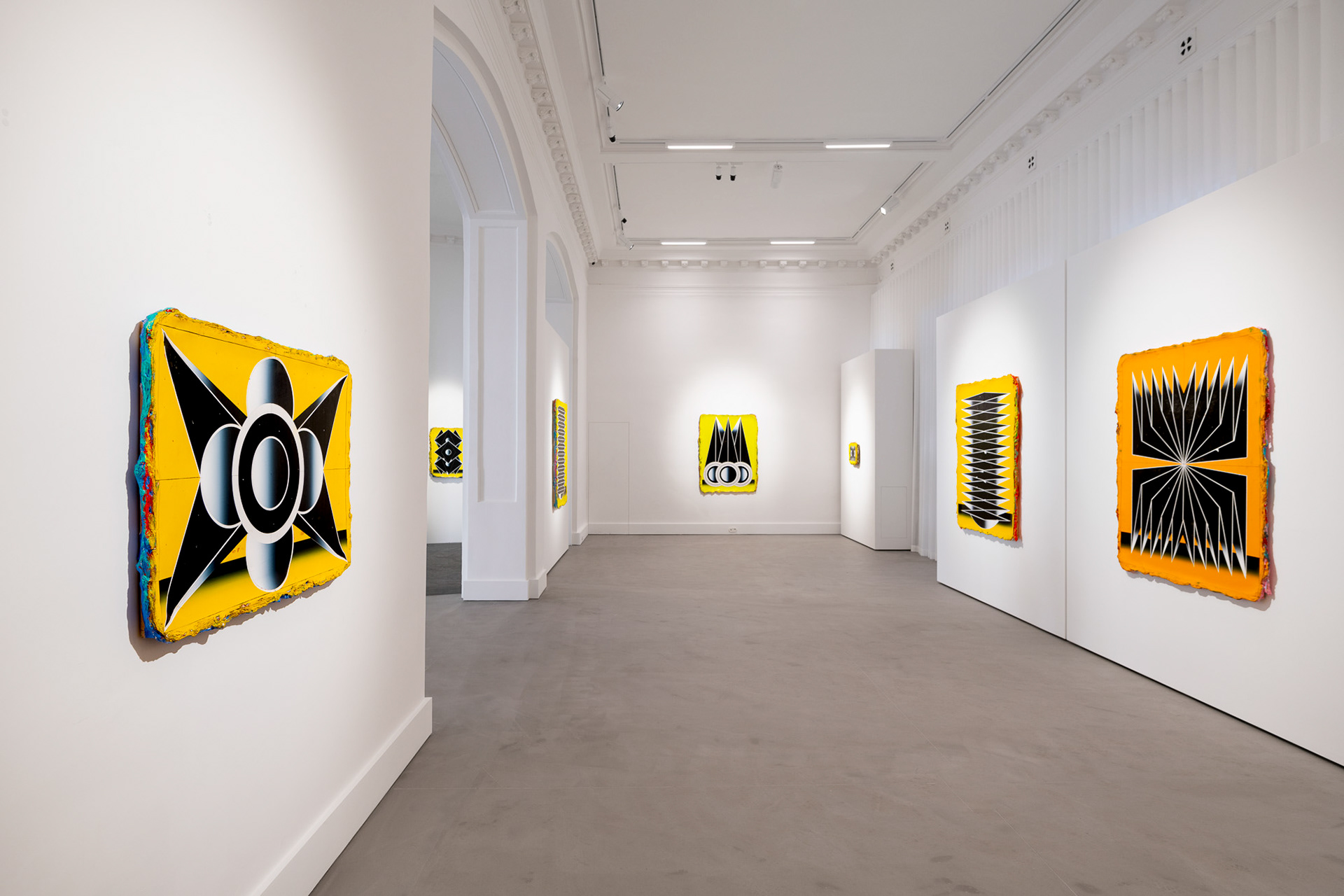


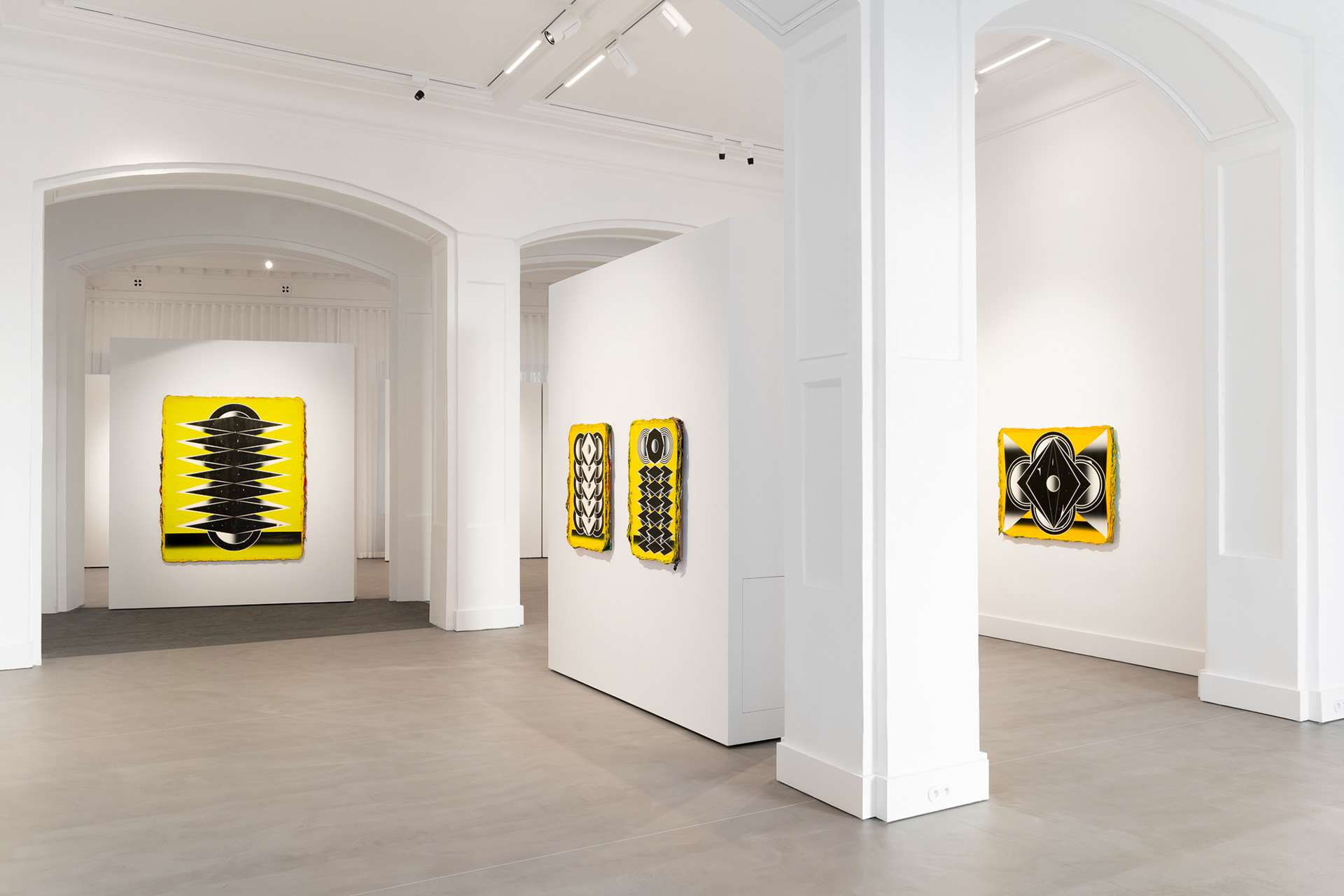
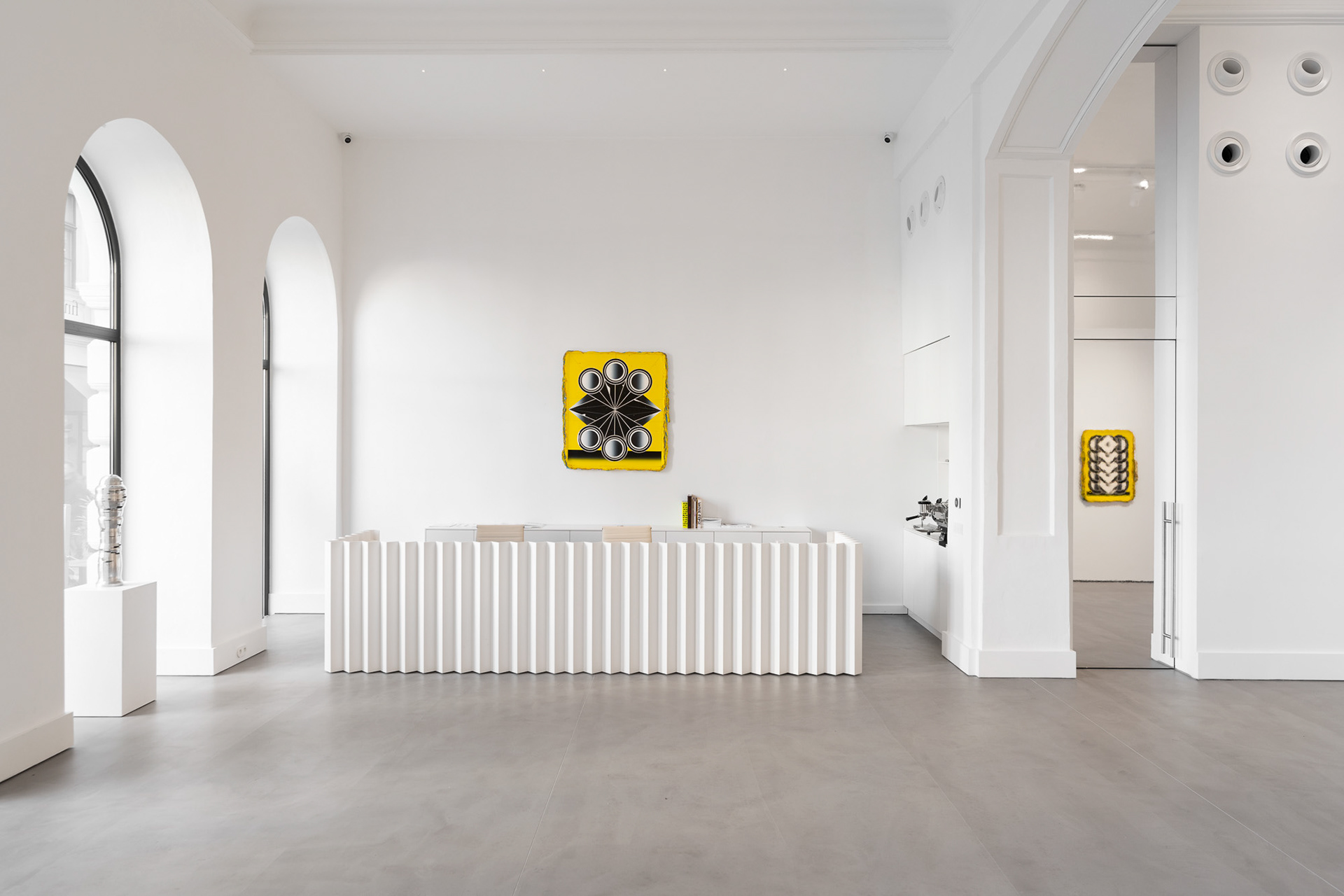
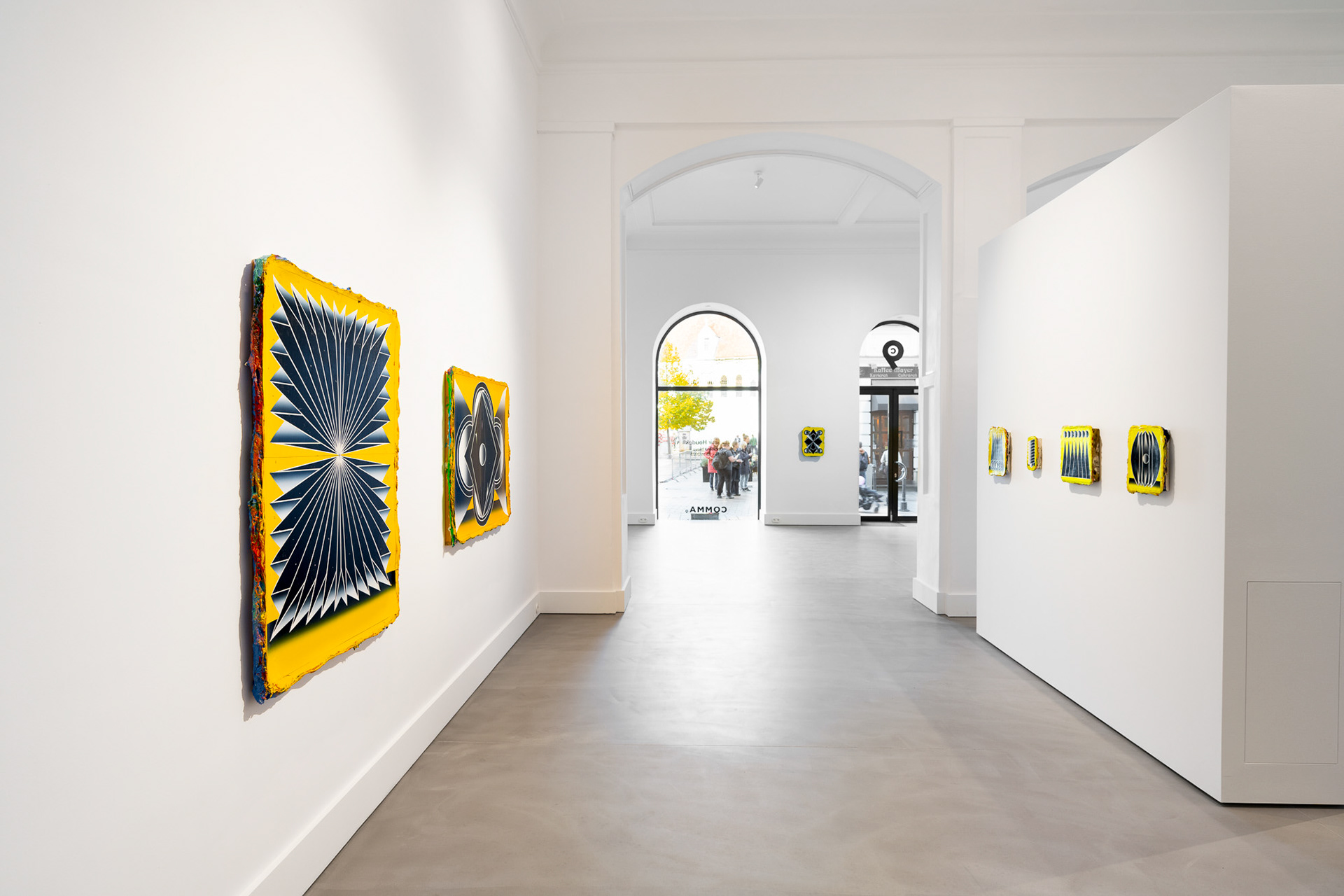

Vladimír Houdek has long been moving on the fragile plane between illusion and reality, concrete motifs and geometrical abstraction, space and surface, or rigid rules and organic accidents. He works in open series, where on the basis of pre-set norms he creates numerous variations in painting, drawing and collage. While finding formal inspiration in the past, through his imaginative geometry and emotion-stirring optical illusions he communicates topical themes. This artist finds inexhaustible stimulation in the cosmological maps of the 15th and 16th centuries; it is not only their exuberant fancy and their knowledge that fascinates him, but also their functional geometry and their inalienable artistic quality. He is inspired by futuristic enchantment with machines and industrial progress, surrealistic toying with reality, the repetitiveness of architectural elements, and the deceptiveness of op-art structures.
Houdek’s first solo exhibition in Slovakia, entitled Head Upside Down, presents a new cycle of works which is marked by past experience and simultaneously offers new artistic solutions. Following the conceptually attuned textual painting series of fictitious dust-jackets (Polis and Atilis Press) and figurative-geometrical pictures combining painting and collage (Kabuki), he is returning to expressive abstract geometry.
His current series of paintings offers a typical combination of circular motifs and folded, multi-angular, spiky shapes, which in axial symmetry create imaginative objects. The significant contrast of black and white, with the alternating variation of fillings and edges, creates a fictive volume and depth on the surface of the painting. Dynamic variations emerge from the new colour spectrum of yellow, which is developing throughout the cycle. Yellow is a colour that is naturally linked with the sun; it symbolises optimism, joy and energy, but in combination with black it creates a striking contrast that warns of danger. Subtle alterations of colour in the background thus dynamise the entire project, while at the same time the key elements, which the artist sets at the centre of his paintings, are allowed expression.
In the past Houdek often used stylised forms to evoke an aesthetic of symbolised factory production. Currently he mainly uses abstract repetitions of shapes, without assigning them a specific meaning or function; rather, he lets them stimulate our imagination. Whether they recall the cupolas of sacred buildings, or the pointed aesthetic of Gothic architecture, these basic geometrical elements bring with them emotions and automatically trigger creative fantasy. On the lines of a futuristic phasing of the motion and dynamic repetition of shapes, we follow a static movement that draws us into the vitals of the paintings and engulfs us in the depth of a black-and-white universe. Gradually we incline our heads and follow the world from a different perspective.
With their geometrical systems, Vladimír Houdek’s works may give a first impression of strictness, and even rigidity. But when we examine what they are aiming to do, gradually they disclose layered surfaces of paintings, sketches, and various organic and incidental details, which would never have come into being in the perfect world of digital technologies. The crude, manual, in places even sculptural character of the framing of the pictures mediates the very act of painting, the physical touch and gradual transfer to the setting of objects in the physical world.
Vladimír Houdek (1984, Nové Město na Moravě) lives and works in Prague. He graduated in 2013 in Vladimír Skrepl’s studio at the Academy of Fine Arts in Prague, taking semester studies with visiting teachers at the Šaloun Studio (Silke Otto-Knapp and Jan Merta). In 2012 he won the Jindřich Chalupecký Prize, and in 2010 he received the Critics’ Prize for Young Painting. He has had solo exhibitions in galleries including Galerie Krinzinger, Vienna; Polansky Gallery, Prague/Brno; National Gallery, Prague; NoD, Prague; Czech Centre, Berlin; GAVU, Cheb; Galerie Kai Erdmann, Hamburg; PLATO, Ostrava. Numerous works of his are included in public and private collections.
Vladimír Houdek sa dlhodobo pohybuje na vratkej rovine medzi ilúziou a realitou, konkrétnymi motívmi a geometrickou abstrakciou, priestorom a plochou či rigidnými pravidlami a organickými náhodami. Pracuje v otvorených sériách, v ktorých na základe vopred stanovených noriem vytvára množstvo maliarskych, kresliarskych a kolážových variácií. Formálnu inšpiráciu nachádza v minulosti, no vďaka obrazotvornosti geometrie a emocionalite optických ilúzií komunikuje aktuálne témy. Autorovým neutíchajúcim stimulom sú kozmologické mapy z 15. a 16. storočia – fascinujúce imaginatívnosťou, poznaním, ale aj funkčnou geometriou s neodškriepiteľnou výtvarnou kvalitou. Inšpiruje ho futuristické očarenie strojmi a priemyselným vývojom, surrealistické pohrávanie sa so skutočnosťou, repetitívnosť architektonických prvkov či klamlivosť opartových štruktúr.
Autorova prvá samostatná výstava na Slovensku s názvom Obrácená hlava predstavuje nový cyklus diel, ktorý je poznačený minulou skúsenosťou a zároveň ponúka nové výtvarné riešenia. Po konceptuálne ladených textových maliarskych sériách fiktívnych knižných obálok (Polis či Atilis Press) a figuratívno-geometrických obrazoch spájajúcich maľbu a koláž (Kabuki) sa vracia k expresívnej abstraktnej geometrii.
Aktuálna séria malieb ponúka typickú kombináciu kruhových motívov a skladaných viacuholných ostrých útvarov, ktoré v osovej symetrii vytvárajú imaginatívne objekty. Signifikantný kontrast čiernej a bielej so striedavým varírovaním výplní a okrajov spoločne s plynulými gradientmi vytvárajú na ploche obrazu fiktívny objem a hĺbku. Dynamické variácie vystupujú z nového farebného spektra žltej, ktoré sa rozvíja v celom cykle. Žltá farba sa prirodzene spája so slnkom, symbolizuje optimizmus, radosť či energiu, no v kombinácií s čiernou vytvára výrazný kontrast, ktorý upozorňuje na nebezpečenstvo. Subtílne farebné obmeny pozadí tak celý projekt dynamizujú a zároveň dávajú vyznieť hlavným elementom, ktoré autor kladie do centra obrazov.
Houdek v minulosti prostredníctvom štylizovaných foriem často odkazoval na estetiku továrenských symbolov. V súčasnosti využíva hlavne abstraktné repetície tvarov, ktorým nepriraďuje konkrétny význam či funkciu, ale necháva ich podnecovať našu vlastnú imagináciu. Či už sú to pripomienky kupol sakrálnych stavieb, či ostrá estetika gotických architektonických prvkov, základné geometrické prvky so sebou prinášajú emócie a spúšťajú automatickú obrazotvornosť. V intenciách futuristického rozfázovania pohybu a dynamickej repetície tvarov sledujeme statický pohyb, ktorý nás vťahuje do útrob obrazov a pohlcuje v hĺbke čiernobieleho univerza. Postupne nakláňame hlavu a sledujeme svet z inej perspektívy.
Diela Vladimíra Houdka môžu pre geometrické systémy pôsobiť prísne a priam rigidne, no ich intencionálne skúmanie postupne odkrýva navrstvené plochy malieb, nákresov či rozličných organických a náhodných detailov, ktoré by v dokonalom svete digitálnych technológii nevznikli. Surový, rukodielny a miestami až skulpturálny charakter orámovania obrazov sprostredkováva samotný akt maľby, fyzický dotyk a postupný presun do prostredia objektov vo fyzickom svete.
Vladimír Houdek (1984, Nové Město na Moravě) žije a pracuje v Prahe. Štúdium absolvoval v roku 2013 v ateliéri Vladimíra Skrepla na Akadémii výtvarných umení v Prahe so semestrálnymi stážami u hosťujúcich pedagógov v Šalounovom ateliéri (Silke Otto-Knapp a Jan Merta). V roku 2012 sa stal laureátom Ceny Jindřicha Chalupeckého a v roku 2010 získal Cenu kritiky za mladú maľbu. Samostatne vystavoval v galériách ako Galerie Krinzinger, Viedeň, Polansky Gallery, Praha/Brno, Národná galéria, Praha, NoD, Praha, České centrum, Berlín, GAVU, Cheb, Galerie Kai Erdmann, Hamburg, PLATO, Ostrava. Jeho tvorba je bohato zastúpená v štátnych a súkromných zbierkach.



